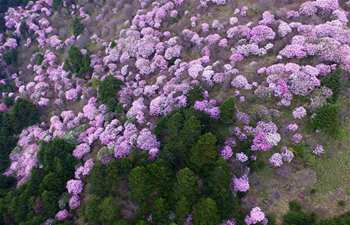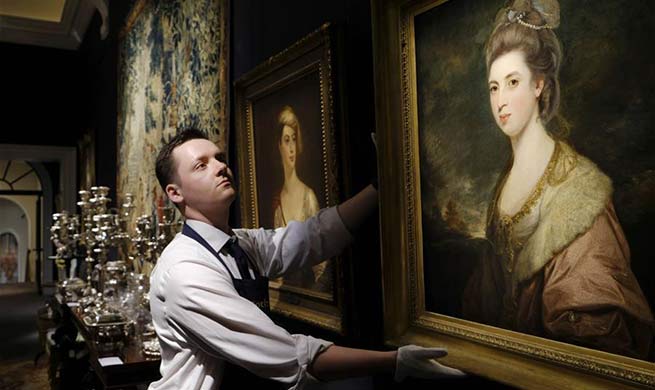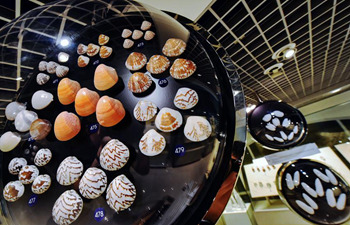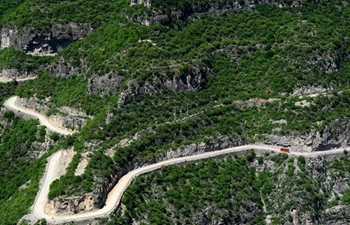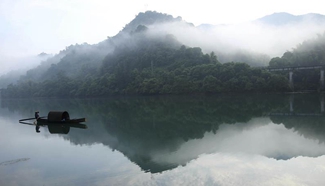By Larry Neild
LONDON, May 20 (Xinhua) -- A huge collection of artefacts frozen in time which offer a unique insight into the indigenous people of Alaska are going home this summer after a seven-year project by a university in Scotland to save them.
Since the discovery seven years ago, archaeologists from the University of Aberdeen painstakingly recovered everyday objects that indigenous Yupik people used to survive and to celebrate life.
It was a race against the clock for the team before melting ice and raging winter storms reclaimed an archaeological site in Alaska known as Nunalleq.
Dating back more than four centuries, the finds included wooden ritual masks, ivory tattoo needles, and even a belt of caribou teeth, all preserved in extraordinary condition.
Dr. Rick Knecht, expert in Alaskan history and culture from the University of Aberdeen, said: "We have uncovered grass baskets and mats made when Shakespeare walked the earth. This is one of the largest collections ever recovered from a single site in Alaska, and perhaps even the whole Arctic region. It accounts for more than 90 percent of everything we know about pre-contact Yup'ik, one of the major indigenous groups in North America."
Knecht knew that once removed from the earth the artefacts would begin to deteriorate quickly. It meant a journey of almost 7,000 km to Scotland for more than 50,000 so professional conservators in Aberdeen could oversee preservation work.
He noted the long-term goal has always been to return them to where they belong and that will become possible later this year with the opening of the new Nunalleq Culture and Archaeology Research Center in Alaska.
"We are now working in partnership with the local Qanirtuuq Corporation and the village of Quinhagak to make arrangements for the safe return of the collection. It is important their stories are told. And we are delighted to be working with the Nunalleq community to ensure these vital artefacts can be shared in the place they belong," added Knecht.
Knecht's team also revealed for the first time evidence of a period known as the "Bow and Arrow Wars," when Yupik communities fought each other in bloody battles, sometime before Russian explorers arrived in Alaska in the 1700s.
"Nunalleq offers the first archaeological evidence, and the first firm date, for these terrible wars, which affected several generations of Yupiit," Knecht added.
It seems likely these attacks were associated with climate change, a 550-year chilling of the Earth now known as the Little Ice Age, that coincided with Nunalleq's occupation. The coldest years in Alaska, in the mid-1600s, may have been a desperate time, with raids probably launched to steal food and take over hunting and fishing territory.
"Oral testimonies passed down from generation to generation speak of the horror of these wars and the archaeological evidence strongly supports this. We have unearthed the remains of women, children and elders together, which suggests that they were captured and killed. These were recorded and turned over to the village for reburial." said Knecht.
Warren Jones, president of the local Yupik corporation known as Qanirtuuq, Inc. was influential in encouraging Knecht and his team to excavate the area.
He said he envisages the center, with the collection at its heart, as a place where people can see, touch, and share stories about the beautifully worked possessions of their ancestors.







